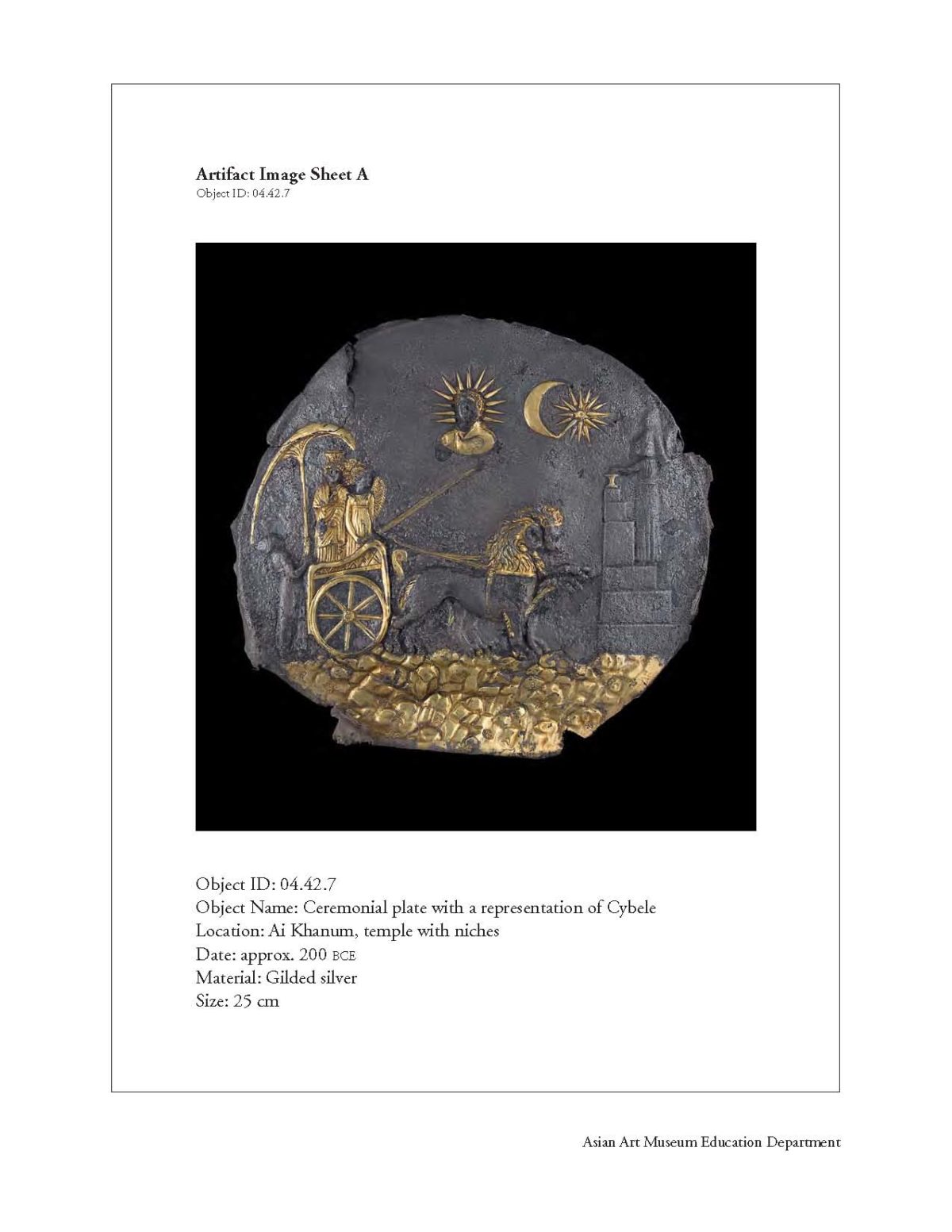Background Information
Slow Down Fast Fashion
Tips and resources to inspire sustainable and slow fashion consumption.
Objective: To expose students to terminology used by archaeologists and to heighten awareness of the rich discoveries in Afghanistan. Students make visual observations, write clear, succinct descriptions, form hypothesis on the function of the artwork, and investigate the influences of different cultures on art found along the Silk Road in Afghanistan.

Artifact Image Sheet Example
Curriculum Unit: Afghanistan: Hidden Treasure from the National Museum, Kabul
Common Core Standards:
W 6-12.3: Write narratives to develop real or imagined experiences or events using effective technique, relevant descriptive details, and well-structured event sequences.
W 6-12.4: Produce clear and coherent writing in which the development, organization, and style are appropriate to task, purpose, and audience.
W7.7: Conduct short research projects to answer a question, drawing on several sources and generating additional related, focused questions for further research and investigation.
Content Standards (California):
HSS 6.6.7: Cite the significance of the trans-Eurasian “silk roads” in the period of the Han Dynasty and Roman Empire and their locations.
VPA/VA 6.1.1: Identify and describe all the elements of art found in selected works of art (e.g., color, shape/form, line, texture, space, value).
VPA/VA 6.3.1: Research and discuss the role of the visual arts in selected periods of history, using a variety of resources (both print and electronic).
VPA/VA 7.3.2: Compare and contrast works of art from various periods, styles, and cultures and explain how those works reflect the society in which they were made.
VPA/VA 9-12.3.3: Identify and describe trends in the visual arts and discuss how the issues of time, place, and cultural influence are reflected in selected works of art.
Materials:
1.) Afghanistan Artwork Descriptions; 2.) Student worksheet: National Museum of Afghanistan, Archaeological Inventory Project (teachers should make a copy for each student); 3.) Artifact Image Sheets A-H (students may work in pairs or groups of four to observe and analyze one object)
Overview:
Before the teacher shows slides of the objects to the class, students are given a picture of an object from the exhibition: Afghanistan: Hidden Treasures from the National Museum, Kabul. The student is instructed to look with the “eyes of an archaeologist.” The student will first carefully take notes on the size, shape, material, and date of the object; then secondly, make a detailed drawing, describe the artifact in words, form a hypothesis of its meaning and function, and generate questions. The purpose of the lesson is to heighten student observation skills and encourage participation during the teacher slide show.
Procedure:
Extension:
On the same day or soon after the activity, the teacher will show the object images in the Afghanistan Artwork Descriptions. Before reading the description accompanying the slide, the teacher can ask the students who completed an inventory sheet on that object to use their worksheets as a reference and to share with the class their observations and hypotheses about the function, ownership, culture, etc.
This lesson was created by Agnes Brenneman, Curriculum Consultant and retired 6th Grade Teacher, Park Day School, Oakland, CA, in conjunction with the exhibition, Afghanistan: Hidden Treasures from the National Museum, Kabul.